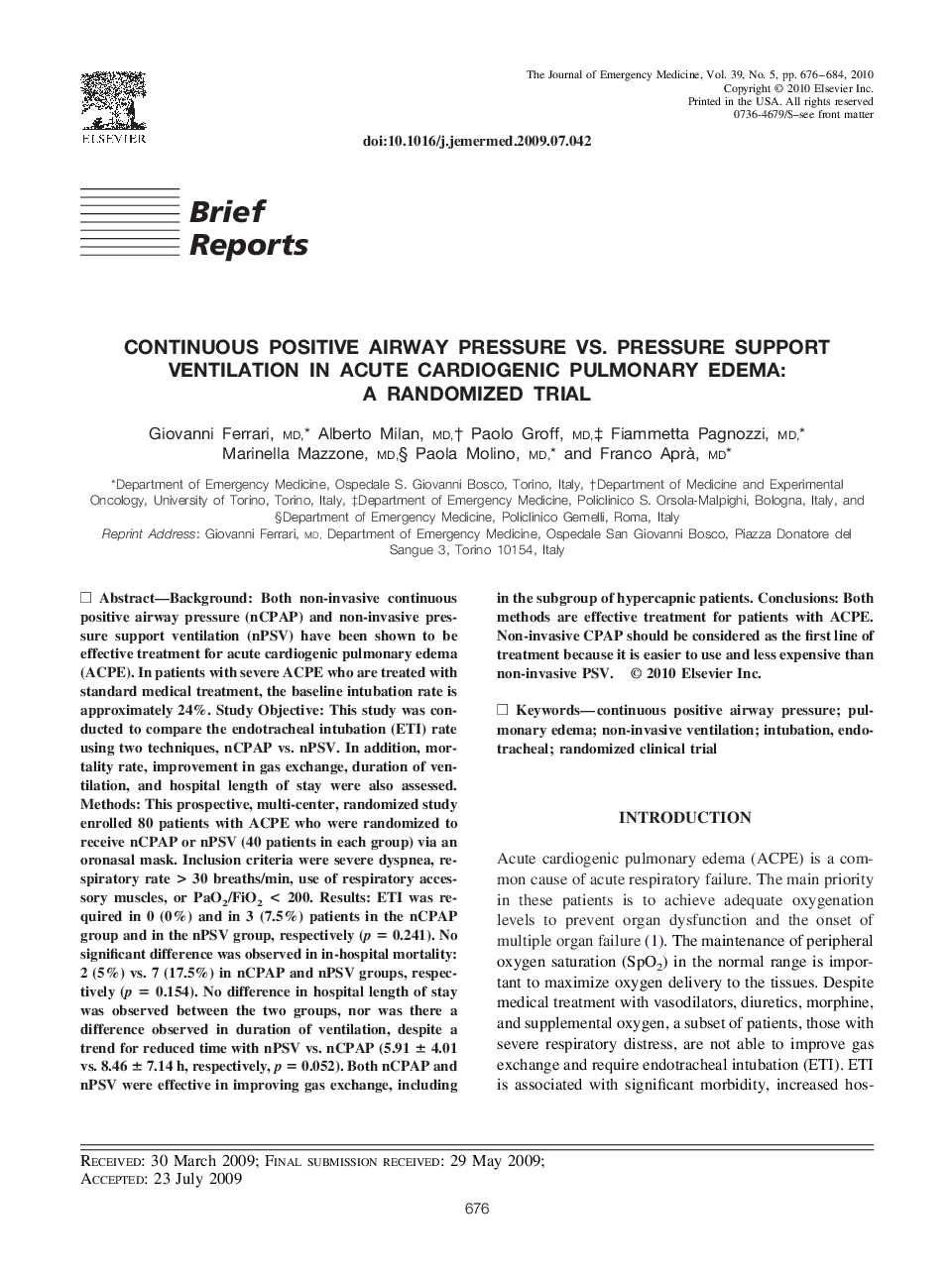| Article ID | Journal | Published Year | Pages | File Type |
|---|---|---|---|---|
| 3249456 | The Journal of Emergency Medicine | 2010 | 9 Pages |
Background: Both non-invasive continuous positive airway pressure (nCPAP) and non-invasive pressure support ventilation (nPSV) have been shown to be effective treatment for acute cardiogenic pulmonary edema (ACPE). In patients with severe ACPE who are treated with standard medical treatment, the baseline intubation rate is approximately 24%. Study Objective: This study was conducted to compare the endotracheal intubation (ETI) rate using two techniques, nCPAP vs. nPSV. In addition, mortality rate, improvement in gas exchange, duration of ventilation, and hospital length of stay were also assessed. Methods: This prospective, multi-center, randomized study enrolled 80 patients with ACPE who were randomized to receive nCPAP or nPSV (40 patients in each group) via an oronasal mask. Inclusion criteria were severe dyspnea, respiratory rate > 30 breaths/min, use of respiratory accessory muscles, or PaO2/FiO2 < 200. Results: ETI was required in 0 (0%) and in 3 (7.5%) patients in the nCPAP group and in the nPSV group, respectively (p = 0.241). No significant difference was observed in in-hospital mortality: 2 (5%) vs. 7 (17.5%) in nCPAP and nPSV groups, respectively (p = 0.154). No difference in hospital length of stay was observed between the two groups, nor was there a difference observed in duration of ventilation, despite a trend for reduced time with nPSV vs. nCPAP (5.91 ± 4.01 vs. 8.46 ± 7.14 h, respectively, p = 0.052). Both nCPAP and nPSV were effective in improving gas exchange, including in the subgroup of hypercapnic patients. Conclusions: Both methods are effective treatment for patients with ACPE. Non-invasive CPAP should be considered as the first line of treatment because it is easier to use and less expensive than non-invasive PSV.
